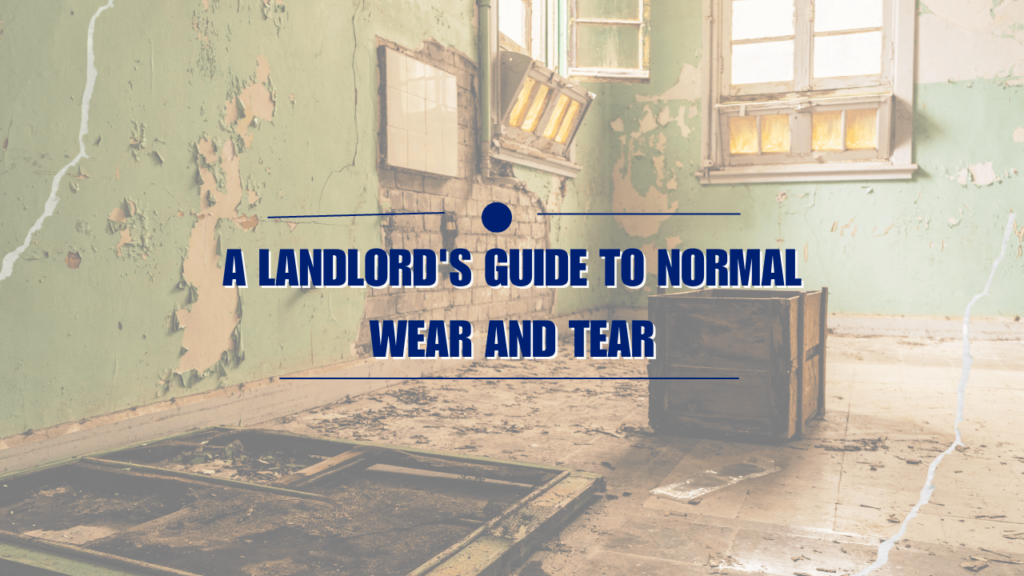
You’ve experienced normal wear and tear at your own home. Maybe the carpet starts to fade in those high-traffic areas or the paint starts to look dirty inside and outside of your home. These are the things that are bound to happen no matter who is living there and how they’re treating the property.
In your Cleveland rental property, the wear and tear that’s found after a tenancy is your responsibility as the property owner. You need to put in some work during the turnover process to make the home ready for your next tenant. That’s going to include a lot of wear and tear repairs and touch-ups. It’s something you’ll need to budget for as you decide to invest in rental property.
Tenant damage is something else. That’s when your property is altered in a way that goes beyond the deterioration that is natural and expected. It’s not usually intentional, but even accidental damage is the responsibility of your tenant. Sometimes, damage occurs from abuse, misuse, or simple neglect.
The main difference is that your tenant must pay for the damage they cause at your property. You can use their security deposit to cover the cost of those repairs.
Sometimes, the difference between damage and normal wear and tear gets a bit fuzzy. You might be inclined to believe you’re looking at damage, but your tenant will certainly believe otherwise.
How do you reconcile this after they’ve moved out, and you’re making decisions about the security deposit?
We’ve put together a guide to normal wear and tear for landlords in Cleveland who may struggle to know the difference between damage and wear and tear. Our experience managing properties professionally has shown us that if there’s going to be a dispute or a conflict between a tenant and landlord, there’s a good chance that dispute is going to revolve around the security deposit return.
Take a look at our guide to normal wear and tear in your rental property.
What Does Normal Wear and Tear Include in Cleveland Rental Homes?
We have talked about scuff marks on walls and floors. We’ve explained that wear and tear is basic deterioration in a property. Every system, function, and detail, whether we’re talking about appliances, paint, water heaters, or outlets, has a shelf life. Nothing will last forever, and that’s due in part to normal wear and tear.
Additional examples of normal wear and tear might include the following situations you detect at your Cleveland rental property during a move-out inspection:
- You might find small nail holes in the walls, especially in the living room or bedrooms, indicating pictures had been hung there.
- Grout may be loose or dirty between tiles on floors and in showers.
- Doors and cabinets might close funny or warp if humidity levels are high.
- Faded paint from sunlight and age.
- Faded, dented, or dusty blinds in the windows.
- Scuffs or dents in walls behind doors (from door handles).
- Carpets with some furniture marks.
- Slight scrapes or marks on a hard floor.
- Finishes wearing away, staining, or rusting.
These are not things you would normally charge for when a tenant moves out and you’re preparing the property for a new resident. This inevitable physical decline occurs during the course of a tenant’s occupancy.
The longer a tenant occupies your property, the more wear and tear can be expected. If a tenant has been in place for 10 years and the walls have not been painted in that entire decade, you’re going to expect that you’ll have to repaint before a new tenant moves in. You’ll likely need to install new carpet or flooring and update your appliances and fixtures. These are not your tenant’s responsibility.
Understanding Average Lifespans
If you’re conducting a move-out inspection after a tenant vacates your property and you notice that your washer and dryer, which are only a year old, no longer work, that’s not evidence of wear and tear. Something had to go wrong, so it’s either a mechanical failure or your tenants broke it. Keeping track of warranty information is a great way to reduce your wear and tear expenses. You should also know how long you can expect things to work.
Here’s a useful chart that shows how long you can expect things to last, and what it looks like when they’re damaged or simply the outcome of normal deterioration.
Material Average Useful Life Normal Wear and Tear Potential Damage
Carpet 5 years Gently worn without holes/stains Pet stains, holes
Tile Floor 25 years Dirty grout Broken or chipped
Windows 20 years Lightly scratched glass Broken glass, hardware
Countertops 20+years Scratches and watermarks Chipped, burnt, stains
Paint 3 years Faded, minor scuffing Markers, re-paints
These are not absolutes; they’re estimates. The lifespan of your own property will depend on a number of things. This guide, however, can give you a starting point when you’re evaluating and planning for normal wear and tear.
When is It Not Normal Wear and Tear?
Damage, by definition, is anything that’s a result of negligence, abuse, or carelessness. Something like a broken dishwasher door could be accidental, but it’s still damaged. Unlike general wear and tear, damage will harm the value, usefulness, or normal functioning of your rental property and its systems.
It’s unexpected.
You wouldn’t expect cracked windows or missing floor tiles from normal, everyday use. This type of damage doesn’t occur naturally because a person is living in the home. It instead may have happened on purpose, by accident, or due to neglect.
When you’re withholding money from the security deposit to pay for these things, document the amount you’re spending and why. You’ll need to provide an itemized list to your tenant that explains why they aren’t getting the full deposit back – or any deposit at all.
Ohio Security Deposit Laws and Wear and Tear
Wear and tear is not an acceptable reason to withhold funds from a tenant’s security deposit in Ohio.
There are specific reasons for which you can withhold all or some of that security deposit. These are:
- Unpaid Rent
- Damage in Excess of Normal Wear and Tear
- Cleaning Bills
Those damage deductions need to be well-documented.
If you have withheld any portion of your tenant’s security deposit, you’re going to provide a written itemized statement along with the portion of the security deposit that the tenant is getting back. This statement must specifically list each reason for deduction along with the amount deducted. If you’re deducting for damage, we recommend you include invoices that will reflect detailed and accurate costs.
Send the security deposit and/or the itemized written list to the tenant’s last known address. Part of your move-out process should be collecting the forwarding address.
Keeping an Eye on Wear and Tear and Preventing Damage
When you have a great tenant living in your property, the wear and tear that’s inflicted on it should not be anything outside of the ordinary. To protect the condition and value of your investment over the long term, you’ll want to invest in good preventative maintenance. This will help you slow down the deterioration that’s natural and normal.
Here are some of the other tips we’d offer in controlling wear and tear as well as avoiding damage.
- Document Move-in and Move-out Condition
A move-in inspection and checklist is critical in order to compare the condition of the property to its move-out condition. When you work with a Cleveland property management company, you can expect that a thorough survey will be conducted to effectively protect your property and distinguish between wear and tear and damage at the end of the tenancy.
One of the benefits to having this completed by a property manager is that professionals stay up to date on the legal requirements and shifts in court trends. You want to know what a judge will think if a tenant disputes your security deposit charges and takes you to court.
Take a lot of photos before the tenant moves in and after the tenant moves out. This will demonstrate exactly how the property has changed before and after the tenant took possession.
- Collecting an Adequate Security Deposit
It’s important to think about the potential for damage when you’re collecting a security deposit. Your marketing should reflect what you’ll require in terms of move-in funds so tenants know what to expect. Ohio does not limit how much you can collect in a security deposit. You need to be reasonable and competitive, but make sure you’re collecting enough to cover any damage that extends beyond wear and tear.
- Conduct Inspections
Once you’ve placed a qualified Cleveland tenant, it’s a good idea to inspect the home once a year. You’ll be able to look for deferred or unreported maintenance, and you can talk to your tenant about how things are going at the property. There’s less of a chance you’ll be surprised by the amount of wear and tear that’s occurred during the tenancy.
 If you have any questions about normal wear and tear and what to expect, we’d love to answer all of your Cleveland property management questions. Please contact us at IIP Management. We work with owners in Cleveland Heights, Lakewood, Lyndhurst, Parma, Solon, and South Euclid (Cuyahoga County).
If you have any questions about normal wear and tear and what to expect, we’d love to answer all of your Cleveland property management questions. Please contact us at IIP Management. We work with owners in Cleveland Heights, Lakewood, Lyndhurst, Parma, Solon, and South Euclid (Cuyahoga County).
